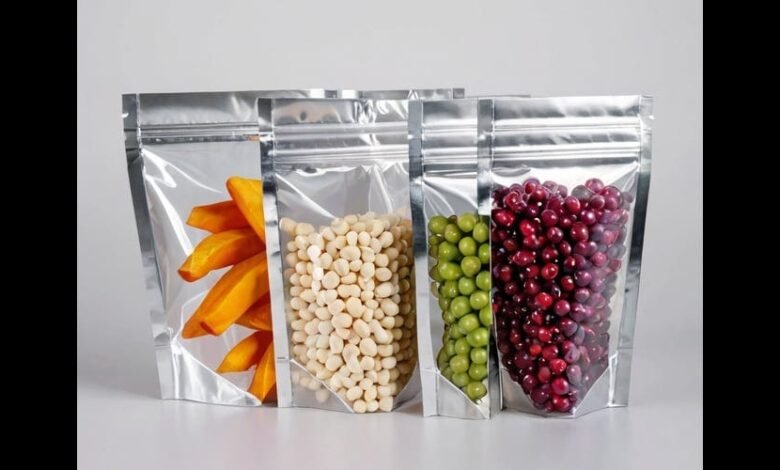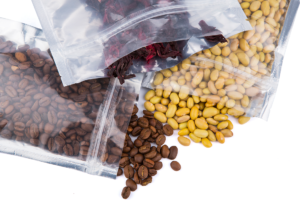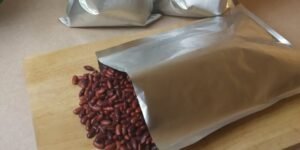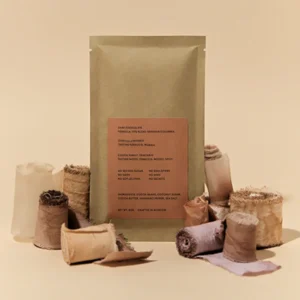
Keeping food fresh and safe is a top priority for everyone, from households to large-scale food producers. The role of protective bags in food storage is essential. These bags are specially designed to maintain the quality of food while extending its shelf life. This article explores how protective bags keep food fresh and safe, delving into the different types of protective bags, their benefits, and best practices for their use.
Types of Protective Bags for Food Storage
Protective bags come in various types, each designed for specific purposes. Understanding the different types helps in selecting the right one for your needs.
- Plastic Bags: These are commonly used in households for short-term storage. They are lightweight, flexible, and inexpensive. However, they may not provide the best protection against moisture and air.
- Vacuum-Sealed Bags: These bags are ideal for long-term storage. They remove air before sealing, reducing the risk of bacterial growth and oxidation, which can spoil food.
- Foil Bags: Often used for snacks and dry goods, foil bags are excellent at blocking light and air, keeping food fresh for a longer time.
- Mylar Bags: Customizable mylar bags offer exceptional protection against moisture, light, and oxygen. They are customizable, making them suitable for various food types and storage conditions.
- Paper Bags: These are used mainly for dry goods like flour and sugar. They allow food to breathe, preventing moisture buildup but may not be suitable for long-term storage.
Choosing the right type of protective bag depends on the food you intend to store and the duration of storage.
How Protective Bags Maintain Freshness

Maintaining freshness is one of the key roles of protective bags. They help preserve the flavor, texture, and nutritional value of food by controlling the environment in which the food is stored.
- Moisture Control: Protective bags, especially those made from Mylar and foil, are excellent at controlling moisture levels. By preventing moisture from entering, they keep dry foods crisp and prevent mold growth in moist foods.
- Oxygen Barrier: Oxygen is a significant factor in food spoilage. Protective bags reduce or eliminate exposure to oxygen, preventing oxidation and bacterial growth.
- Temperature Regulation: Some protective bags, like vacuum-sealed ones, help maintain a consistent temperature, reducing the risk of temperature-related spoilage.
- Light Protection: Exposure to light can degrade the quality of food, especially in products like oils and grains. Protective bags made of opaque materials block light, preserving food quality.
By controlling these factors, protective bags ensure that food remains fresh for longer periods.
Enhancing Food Safety with Protective Bags
Food safety is paramount, and protective bags play a crucial role in safeguarding food from contaminants.
- Barrier Against Contaminants: Protective bags create a physical barrier that keeps out dust, dirt, and other contaminants. This is particularly important in environments where food is exposed to external elements.
- Preventing Cross-Contamination: When storing different types of food, protective bags prevent cross-contamination, ensuring that flavors, odors, and bacteria do not transfer from one food item to another.
- Reducing Foodborne Illnesses: By maintaining a controlled environment, protective bags minimize the risk of foodborne illnesses caused by bacteria and other pathogens.
- Chemical Safety: Protective bags, especially those made from food-grade materials, do not leach harmful chemicals into the food. This is crucial for maintaining the safety and quality of stored food.
Using protective bags correctly enhances food safety, reducing the risk of contamination and spoilage.
The Role of Protective Bags in Extending Shelf Life

Extending the shelf life of food is essential for reducing waste and ensuring that food remains available for longer periods. Protective bags are designed to achieve this by creating an optimal storage environment.
- Reduced Oxidation: Oxidation is a leading cause of food spoilage. Protective bags reduce oxygen exposure, slowing down the oxidation process and extending the shelf life of perishable foods.
- Slowing Down Spoilage: By controlling moisture, temperature, and light, protective bags slow down the natural spoilage process. This is particularly beneficial for fruits, vegetables, and other fresh foods.
- Long-Term Storage Solutions: For long-term storage, protective bags like vacuum-sealed and Mylar bags are ideal. They can extend the shelf life of food by months or even years, making them perfect for emergency food supplies and bulk storage.
- Cost-Effective Preservation: Extending the shelf life of food reduces the need for frequent purchases, making protective bags a cost-effective solution for both households and businesses.
Using protective bags to extend the shelf life of food not only saves money but also ensures that food remains available and safe for consumption.
Best Practices for Using Protective Bags
To maximize the benefits of protective bags, it’s essential to follow best practices in their use.
- Proper Sealing: Ensure that bags are sealed correctly to prevent air, moisture, and contaminants from entering. This is especially important for vacuum-sealed and Mylar bags.
- Labeling and Dating: Always label and date the bags before storing them. This helps in tracking the freshness of the food and ensures that older items are used first.
- Storing in Cool, Dry Places: Store protective bags in a cool, dry place away from direct sunlight. This helps in maintaining the quality of the food.
- Avoid Overfilling: Do not overfill protective bags, as this can lead to improper sealing and reduced effectiveness in protecting the food.
- Regular Inspection: Periodically inspect stored food and protective bags for any signs of damage or spoilage. Replace any damaged bags to maintain the integrity of the stored food.
By following these best practices, you can ensure that protective bags provide maximum protection for your food.
The Environmental Impact of Protective Bags

While protective bags are highly effective in keeping food fresh and safe, their environmental impact is a concern. It’s essential to consider eco-friendly options and practices when using protective bags.
- Reusability: Some protective bags, like certain types of plastic and Mylar bags, can be reused. Reusing bags reduces waste and the environmental footprint of food storage.
- Recycling Options: Many protective bags are recyclable. Check local recycling guidelines to ensure that bags are disposed of properly.
- Biodegradable Alternatives: Consider using biodegradable protective bags for short-term storage. These bags break down more quickly in the environment, reducing their impact on landfills.
- Minimizing Use: Use protective bags only when necessary. For some foods, alternative storage methods like glass containers or reusable cloth bags may be more environmentally friendly.
Balancing the effectiveness of protective bags with environmental responsibility is crucial in modern food storage practices.
Conclusion
Protective bags are an essential tool in food storage, offering a range of benefits that keep food fresh and safe. By understanding the different types of protective bags and their specific uses, you can make informed choices that enhance food safety and extend shelf life. While protective bags are highly effective, it’s also important to consider their environmental impact and look for eco-friendly options where possible. As technology continues to advance, protective bags will play an even more critical role in food storage, ensuring that food remains fresh, safe, and available for longer periods.



